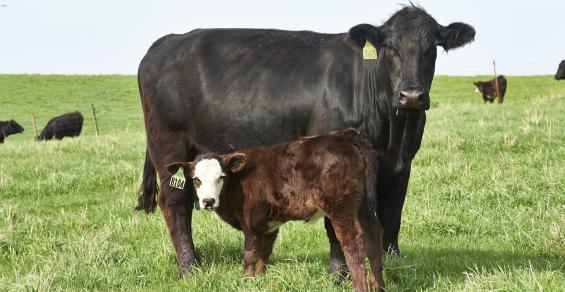Bovine viral diarrhea virus (BVDV) has been around pastures and feedlots a long time, but it continues to challenge herd management. Not only are the signs often subtle, but this complex virus continues to evolve presenting new threats with shifting viral subtypes.
The most common BVDV threat affecting cattle in the United States is BVDV Type 1b, and there are several good reasons to step up prevention measures against this all-too-common herd risk.
1. Type 1b is now the most prevalent subtype in the United States, accounting for more than two-thirds of all BVDV-positive cattle.1 It came about when the Type 1 subtype mutated and, in 1999, Type 1b was identified.1 Since then, there has been a shift away from Type 1a to more prevalence of Type 1b, as reported by BVDV experts.
2. Like other BVDV strains, Type 1b spreads easily through most livestock environments, including feed and water. It invades the animal’s respiratory and reproductive systems, spreading between heifers, cows, calves, steers and bulls. Even previously vaccinated cattle might be at risk of being infected by the Type 1b subtype.
3. It can span a lifetime, over all segments of animal development. “BVDV causes reproductive issues, leads to persistently infected (PI) calves, which can be infected in utero; and later, is a key component of the bovine respiratory disease complex in stocker and feedlot cattle,” said Dr. John Davidson, senior associate director of beef cattle professional veterinary services for Boehringer Ingelheim (BI).
Identifying PI calves can be most challenging, he noted. “They’re often not noticeably different from healthy calves and thus appear normal, but a PI calf sheds a lot of virus through secretions each and every day. And any PI heifers that are retained will continue to shed the virus and infect more animals. When tracked throughout the production chain, the economic impact of BVDV can be tremendous.”
4. Prevention is simple. That’s the good news, said Dr. Davidson. “For the cow-calf producer, prevention can be accomplished with a vaccination program that utilizes a vaccine labeled for BVDV Type 1b prevention if label directions are correctly followed.”
5. Not all vaccines are specifically labeled to protect against BVDV Type 1b. Make sure you’re using a vaccine that is labeled to protect against BVDV Type 1b. Pyramid® 5 + Presponse® SQ from BI is now labeled for protection against respiratory disease caused by BVDV Type 1b for at least 217 days. BVDV protection can also be found in the Express® FP vaccine for cows — labeled to prevent PI calves including BVDV Type 1b for 365 days.
“Vaccinating calves at all stages is one of the best ways to ensure cattle are protected against BVDV and other causes of respiratory disease,” said Dr. Davidson. “Producers should talk to their veterinarian or Boehringer Ingelheim sales representative about the best BVDV vaccine options for their cattle operation.”
Legal:
Express, Pyramid and Presponse are registered trademarks of Boehringer Ingelheim Vetmedica, Inc. © 2017 Boehringer Ingelheim Vetmedica, Inc.
References:
1- Fulton RW, Ridpath JF, Saliki JT, et al. Bovine viral diarrhea virus (BVDV) 1b: predominant BVDV subtype in calves with respiratory disease. Can J Vet Res 2002;66(3):181—190.




Leave A Comment